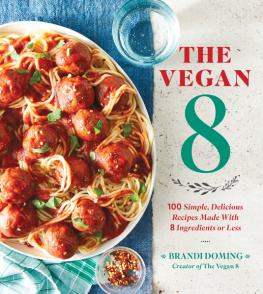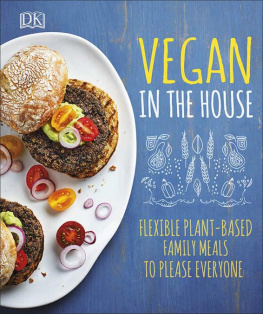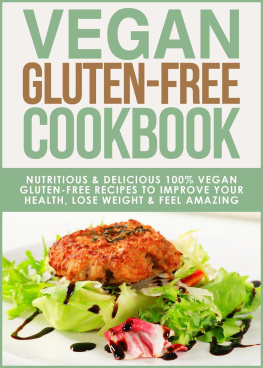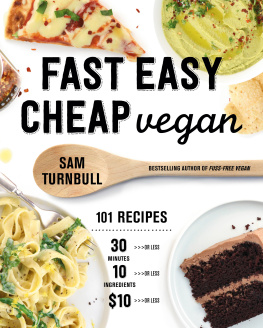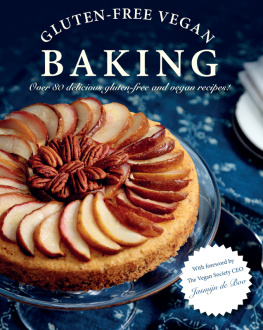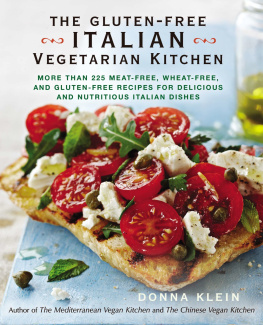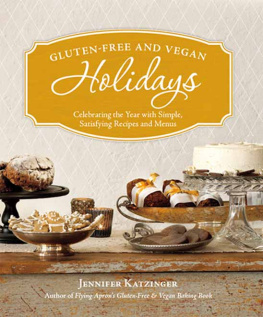
THE VEGAN
100 Simple, Delicious
Recipes Made With 8 Ingredients or Less
BRANDI DOMING
Creator of The Vegan 8
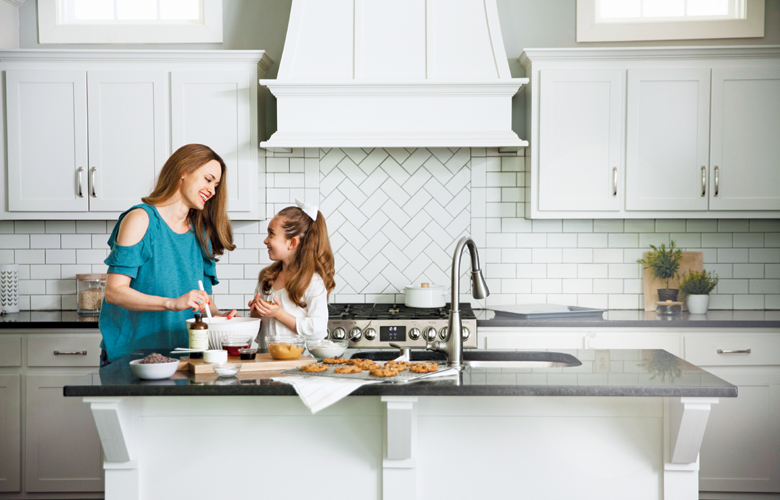

CONTENTS

THE VEGAN 8 KITCHEN
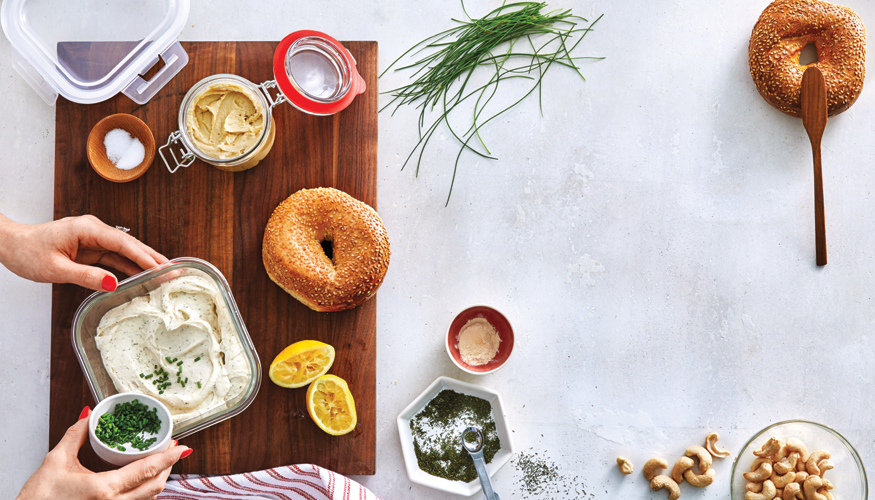
I love bold flavors but also enjoy simplicity. In this chapter, youll find the ingredients that I keep stocked and use regularly in my kitchen to create satisfying recipes with just 8 ingredients or less (not including salt, pepper, or water). I may use the same or similar ingredients in my recipes, but I like to use them in new and exciting ways each time. You will find a full yet pretty recognizable list of spices, which is intentional; Im not going to send you off looking for days for a spice you probably have never heard of. If you are new to vegan cooking or even cooking in general, this list of ingredients is a good starting point to stock your pantry. From there, youll be able to make a wide range of quick and easy meals from this book.
GETTING STARTED
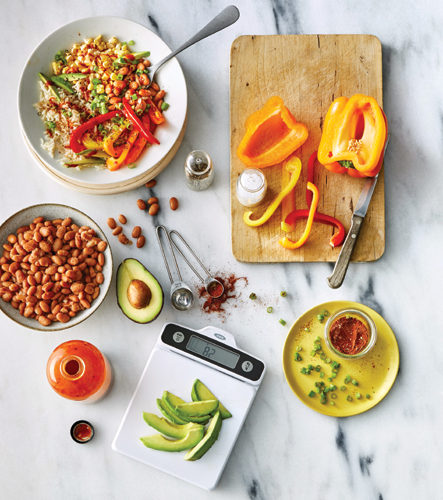
FOLLOWING THE RECIPES AND SUBSTITUTIONS
Lets start with the most important thing: Read the entire recipe before beginning each one so you are prepared and know what to expect. This will make following the recipe more comfortable, and youll avoid surprises during cooking. Additionally, since all of my recipes use 8 ingredients or less (not including salt, black pepper, or water), then you can imagine how important each ingredient is for the end result. I chose every ingredient very carefully for maximum impact and spent hours in the kitchen perfecting the recipes so that you dont have to. You can simply follow the recipe to create a meal that I hope you will love! So, if you try to sub 4 of the 8 ingredients, you are going to end up with a completely different recipeand you may not like the results. Plus, if you alter the recipe on the first go, then you wont know what the intended result is. The finished dish could be bland or the dessert may not bake up properly. Im all for adapting things to suit your tastes (I have notes about this very thing throughout the book), but heres my advice: I strongly encourage you to follow these recipes exactly as written at least the first time you make them. After you get a feel for the flavors and method, feel free to add your own twists thereafter.
As for substitutions, I do list subs in recipes throughout the book when they can be done to make a recipe gluten free and nut free, for example. But, in many cases, that sub is never going to taste as amazing as the original recipe, which includes the ingredients I think make the finished dish taste the best and have the best texture.
For example, with cashew-based recipes, white beans or potatoes are listed as subs for those with allergies, but (in my opinion) those subs dont taste as rich or creamy as cashews. Of course, I have many readers who are used to using white beans in place of cashews and enjoy them, which makes me happy! Also, another common nut-free sub I give for my desserts is to use sunflower seed butter in place of almond butter. The texture will be basically the same, but sunflower seed butter does leave a much stronger flavor, which I note on those recipes.
If you ever have any questions or concerns, Im always here to help. Please dont ever hesitate to reach out to me through my websites contact page, and I will answer any questions you have. You can find me at TheVegan8.com.
WEIGHING INGREDIENTS AND USING A SCALE
I am a staunch advocate of weighing ingredients. The reason is simple: accuracy. Have you ever heard somebody say that the first time they baked something it was great, but the next time it didnt work? I hear that all the time. While there are many factors, it is likely because everyone measures ingredients a little differently. The results can be all over the place. Use a scale, and your chances for mess-ups will go down considerably. Thats why I include weights in every recipeit ensures my recipes work perfectly each time you make them. The only time weighing ingredients is not necessary is with small teaspoon amounts, which are often so small that the scale does not detect them accurately. So, for anything below a tablespoon, I still rely on my measuring spoons. Also, a kitchen scale is a small kitchen investment, starting at $10 and up. Mine was only about $20, and I have used the same one for years.
BAKING
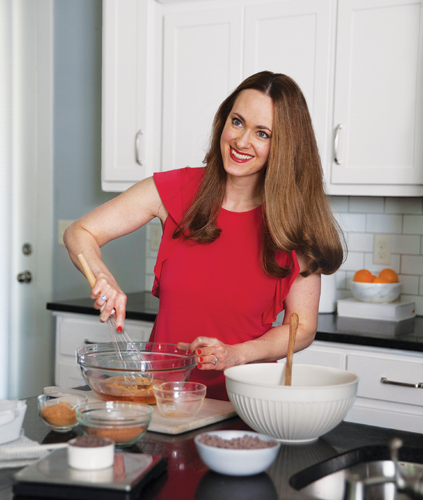
BAKING LOVE
Im a lifelong baker, and I have been writing decadent dessert recipes long before I ever became vegan. Creating desserts has always been a passionI blame my obsessive sweet tooth for that. I let my creativity explode with desserts. I first started falling in love with baking from cookbooks. I would play around with those recipes, change things up, and try to make them a bit healthier. Even years back, I was swapping out part of the oil or butter for zucchini and fruit purees like applesauce.
BAKING AND WEIGHING
Have you ever heard, Baking is a science? Well, its true. Some science experiments are cool and some are explosions. That is why some people hate baking and others love it. But thats also why using a scale becomes even more important. I nearly want to shout it from the rooftops, Use a scale when baking! Why? We all measure flours a little differently. Some people pack the measuring cups, while others do not. But that difference can be the reason for the results you get, be they breathtaking or simply awful. Even 1 or 2 tablespoons of flour or liquid can tremendously affect the end result and texture of a baked good. Accuracy in measurements (as well as quality recipes) will yield happy bakers.
The thing is, once you get into the habit of weighing your ingredients, it is so much faster and easier. I just plop my bowl onto the scale, add the flour, salt, baking powder, and then the liquids and the rest of the ingredients. I never even touch a measuring cup. Just be sure to zero out in between each ingredient, and you are good to go. When weighing ingredients with liquids, make sure to pour slowly so you dont add too much too fast and throw off the liquid ratio. It may seem a bit weird at first if youve never weighed ingredients, but it will soon become second nature. Plus, you will come to love the tasty results that follow from your precision. So, to recap, go out and buy a scale before making the recipes from this book, OK?
DIFFERENT PANS FOR BAKING
The pans you use play a crucial role in the results since heat reacts differently in each one. The pan called for in each recipe is the one that yields the best results.
Aluminum vs. stone or ceramic: Aluminum pans are great conductors of heatthey heat up and distribute heat very quickly and effectively. However, the pans are thin and, depending on the recipe, that can mean the edges sometimes crisp quicker than desired. For example, for . That recipe doesnt use starch (only flour), and it is quite a thick cake. In this case, an aluminum pan is what we want. It heats the cake quickly and evenly, and it cooks perfectly throughout. A stone dish can cause the centers to take longer to cook through.
Next page
